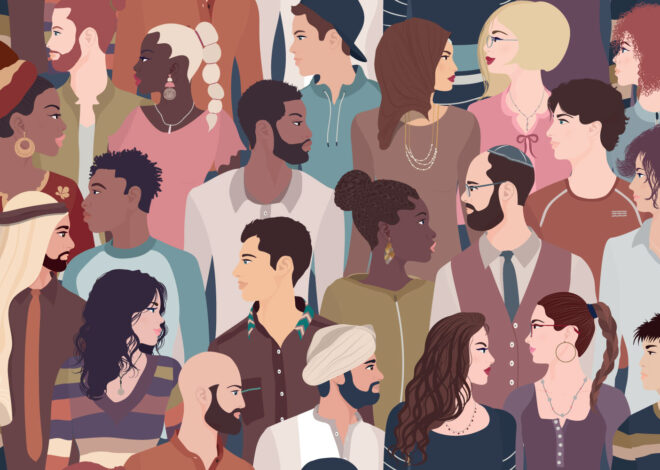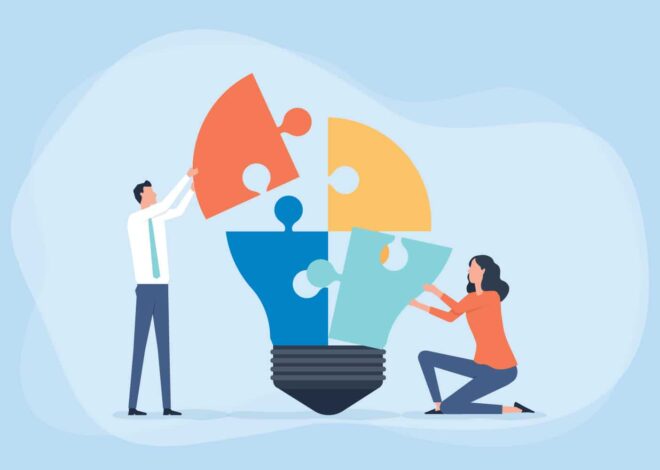How Lessons Learned From Fighting Food Insecurity Can Help Your Nonprofit
Simple acts can have a big impact on the community. Learn how one nonprofit discovered the tools to fight systemic issues were at their disposal all along — they just needed to learn how to use them.

Six best practices for small ways your nonprofit can lead great change.
When I began a food drive for folks who had been affected by the pandemic, I did not think it would lead me to a career change, a 501(c)(3), and a lot of incredible lessons and knowledge.
Growing out of a single event, Nourish LA now provides a free bag of groceries to any person who shows up at our weekly distribution sites. It’s a simple act with a big impact—like what many of us do in the nonprofit sector. And just like many other nonprofits, the more you start trying to address this need in your community, the more you realize the issue is a lot bigger than you originally thought.
This is definitely what happened for our story: we started with a simple idea and then were incredibly surprised at how helpful an extra bag of groceries could be to a lot of households. We also started to notice just how many elders and families are affected by food insecurity: more than 34 million people in the United States alone. And during the pandemic in particular, about 23 percent of our fellow Californians faced food insecurity. The more food we gave out to the community, the greater we realized this need really was: the dearth in terms of consistent access to food was incredibly widespread throughout our community.
But what we’ve learned in the process, in part, was how to turn this apparent lack—this something missing—into a possibility—something we could grow into.1 That is, even though it may not seem apparent, we are all incredibly capable of leading great change in small ways. It doesn’t take a ton of education or even a degree to help people. All it takes is a little effort, neighborliness, and humility.
Below are 6 best practices (disguised as lessons) I’ve learned by creating and growing with Nourish LA. I hope these will inspire you on your own journey of helping others!
Lesson 1: Find & divert resources being wasted.
The conventional culture in America generates a lot of inefficiencies and wasted resources, both tangible and abstract. At Nourish LA, we focus on the astounding amount of perfectly good food that gets thrown away every week, and we redirect it to our hungry Los Angeles communities.
But part of what this means is going out into our communities and asking questions. We have learned to ask our local bakers, farmers, and grocery stores the same questions: “What happens at the end of the day? Where does excess food (or even day-old baked goods) end up?” If any of these people say the trash, we now know there’s a vital resource being wasted that can and should be diverted.
However, this excess can be useful to more than just food-focused nonprofits. That is, it can be diverted to humans (and other animals, surely) as food, but it can also (usually) go back into the soil as compost, nourishing the next generation of crops. That is, it can become food for future food—a truly regenerative cycle! All too often, we have the tools to fight (or at least, those we can grow to fight) systemic issues at our disposal, we just need to learn how to use them.
And wasted materials extend beyond excess food. In the corporate and nonprofit spheres alike, mental and emotional energy, fresh ideas, and time are just a few of the many resources routinely (though often unintentionally) relegated to the dust bin.
The first step to counteract this waste to ask questions and identify what is being squandered in your area. What resources are being wasted? How can they be rescued and redirected to help your community? If there are existing nonprofits that address this general issue, consider if there are areas they’re not covering, or people not being served.
Lesson 2: Understand the laws.
Once you have identified what resources you are saving and how you think they should be utilized, do your due diligence to make sure you’re following all applicable federal, state, and local laws as well as relevant court decisions.
For those of us working to address food insecurity, we learned to start with the Good Samaritan Act (GSA).2 This important, nationwide law empowers nonprofits and other like-minded folks to be able to share donated food amongst people in need. One of the things it has helped us understand is that we cannot sell this food, for example. Legally, donated food—like other donations—should be viewed as a gift and cannot be re-sold without being subject to huge fines. Instead, we now have to make sure that this food ends up in the hands—and eventually, the bellies—of those who need it most.
Even if you think that your area of interest could not possibly have been addressed by governance or the courts, there may be laws on the books that affect the handling and redistribution of specific or related resources. Due diligence can save you from headaches later on, so make sure to do your research.
Beyond knowing about laws, the GSA (and other laws like it) is also a testament to the political power of nonprofits. Prior to the Good Samaritan Act, many corporations felt they could face liability for donating food, and people who salvaged it without documented donation could face prosecution. After many years of lobbying and hard work, the GSA was passed, enabling all parties to help people. Making sure you know the laws concerning your nonprofit’s work could better position you to be an even bigger force for change in the future!33
Lesson 3: Create partnerships.
Now that you are familiar with the legal side, it’s time to branch out in terms of other potential networks. This means that you might start looking for partnerships, remembering that collaborations can take a variety of different forms.
For those of us who work in food redistribution, a great place to start was with our local places of faith. We learned that a lot of people in need routinely look to places of worship to help them solve food access problems. However, we also learned to look for other community-based nonprofits that specialize in providing services to help folks in need. For us, partnering with similarly focused nonprofits, places of faith, and schools just made sense.
But in pursuit of these partnerships, you also need to make sure you iron out some of the specific details. The more intensive your partnership is, the more information you need on your partners (especially if there’s any kind of funding involved). For us, we needed to make sure any of our community partners had a kitchen/refrigerator/storage area and a Taxpayer Identification Number (TIN). The kitchen/fridge/storage helped us make sure they could use the food (so it wouldn’t just go to waste), while the TIN was necessary to access the food donations and to help remove liability from the donating grocery store or corporation—something we also learned from the GSA!4
No matter what field you are working in, it helps to find out if there’s an organization already doing something similar or related to your mission in some way. You can reach out to them to donate, to get ideas and advice,5 or even form a partnership. They may want to work with you on a related aspect of something they don’t yet cover, or you might be able to offer additional programming that they just can’t seem to build capacity for. After all, these networks can be—and hopefully are—mutually beneficial.
And remember, partnerships can take a variety of different forms—so let your imagination run wild! If you could, who would you want to partner with? Consider which partners are committed to safe food handling and will not hold you responsible if they distribute unsafe food.
Lesson 4: Ensure access.
Any community is made up of myriad members from varied circumstances. At the end of the day, you want to make sure everyone who needs your services can easily—and conveniently—access them. There’s no point in providing services if those services are a pain in the butt to try and get (looking at you, federal government)!
For our food distributions, we keep in mind that our communities are not monoliths: some people we serve may not be able to climb stairs, for example, or they may need other accommodations. Ensuring access also means keeping everything simple, neat, clean, and organized. We want to make sure people don’t have to wait a long time to get access to food, especially because we know a lot of people are stopping by in between jobs or on the way to pick up their kids from school: time being money and all that.
As such, we like to have someone with food-handling experience on-site (as well as a washing station for dirty hands). These people on our team are usually responsible for making sure volunteer hands and sites are clean. We also make sure to have separate areas for trash, recycling, and compost—signage is always helpful for quick and clear messaging!
Of course, nonprofits in other fields (and communities) will have varying populations and access requirements, but it is still important to keep these top of mind. You want to make sure those that need your services are able to get them! This means you need to think through some of the logistics of what it takes to actually access your services. If you are only open certain hours, it might make it difficult for people to access your services. You might consider, for example, surveying your clients to see if your operational hours best suit their needs.6
Similarly, you might also consider what media/formats are best for actually reaching your community. Do your community members use social media, Facebook groups, forums, flyers, or church bulletins? Make sure your services are visible, so folks know where to go when they need it!
And here, partnering with other organizations and institutions can do a lot to both increase your visibility and accessibility at the same time! The more places you are able to offer your services, the more people will be able to (conveniently) use them. And if it’s not possible for you to actually be in multiple locations at once (so to speak), make sure your partners at least have your address so they know where to send people. It might even be beneficial to organize a shuttle between partner locations (if possible)!
Lesson 5: Start local.
With worldwide media, it’s tempting to think of action only on a global scale, but I’m a firm believer in the power of local action (including local partnerships).
At Nourish LA, we help combat multiple issues just through local food redistribution. The in-person community that assembles for our weekly events lessens loneliness,77 for example, and community soil health is improved through our composting efforts. Of course, food insecurity and food waste are reduced by giving to those in need. We even address climate change by ensuring food waste doesn’t go to a landfill, where it would decompose and produce large amounts of methane. Part of what this local focus means is understanding the overlapping environmental contexts within which issues occur: problems don’t happen in a vacuum, after all.
So however, you start, start locally. Whether it’s within your community, your neighbors, a school, a church, friends, family members, or within an existing organization, find what local means to you and begin there.
Having a local mindset also means asking yourself at each opportunity for growth whether this is the right way and time to expand.8 Is this additional program something your nonprofit needs to do—or is it something a partner might be better suited for?
Starting and growing locally will allow you to hone your skills and best practices while minimizing burnout. However, it may have a much larger positive effect than you anticipate, including increasing your network and ultimately strengthening your community.
Lesson 6: Build your community.
I’ve saved the best for last: the best part is the community you’ll build while making a difference. As we in the sector know, nonprofits bring together a lot of incredible people who are passionate about the cause. From my experience, this builds meaningful relationships you can’t get anywhere else.
So make sure you nurture this community—both the people you serve and the folks who act in their service (although these two are not mutually exclusive). Get to know your regular volunteers as well as any regular clients, and make sure they are tuned in with any local partners as well. After all, we get stronger together. Building out your community will ultimately save a lot of time, improve your organization’s efficacy, and eliminate resource waste.
Local Foundations Help Us Grow Strong
It’s easy to feel hopeless, to lose yourself overthinking the best way to solve our world’s great injustices. Start by addressing the needs of your local community—you might be surprised just how empowering it is!
As you continue, assess what’s working and what isn’t, grow your team, and keep building on your successes. You are always going to be learning, and it can always improve, but you can’t improve if you never begin. Don’t beat yourself up about missteps! Just make notes and do better the following week.
Remember that every powerful movement, every massive system, every complex organization—everything large started out small and local. Every great tree began as a seed. The important thing to remember is to just start.
Footnotes:
- Read more on reframing dearth into abundance. ↩︎
- Here’s a more comprehensive breakdown of the Good Samaritan Act from the USDA. ↩︎
- Interested in getting involved in lobbying, for example? Check out this Beginner’s Guide to Lobbying as well as this how-to on garnering state legislative support for your cause! ↩︎
- Nonprofits can also be held liable if they don’t store the food properly, it spoils while in their possession, they then give it away, and someone gets sick. ↩︎
- See how nonprofit leaders can support each other through peer networking. ↩︎
- See how to use feedback to create community-centered services. ↩︎
- This might not seem like much, but considering the loneliness epidemic our society currently faces, but combatting loneliness is vital to building strong local communities! ↩︎
- See tips on how to grow responsibly (and avoid the growth paradox for nonprofits). ↩︎
About the Author
Articles on Blue Avocado do not provide legal representation or legal advice and should not be used as a substitute for advice or legal counsel. Blue Avocado provides space for the nonprofit sector to express new ideas. Views represented in Blue Avocado do not necessarily express the opinion of the publication or its publisher.










